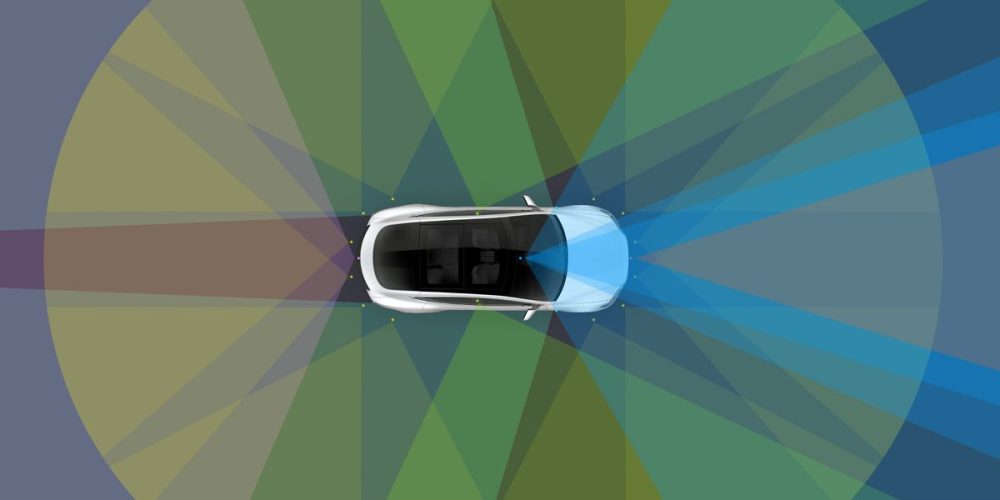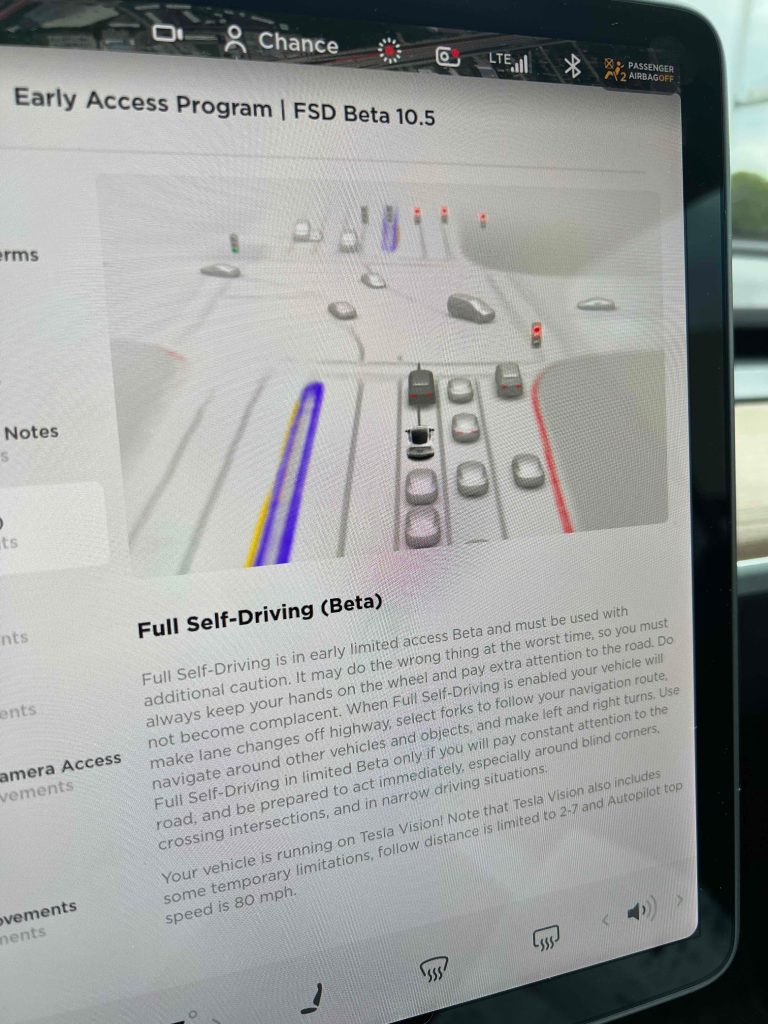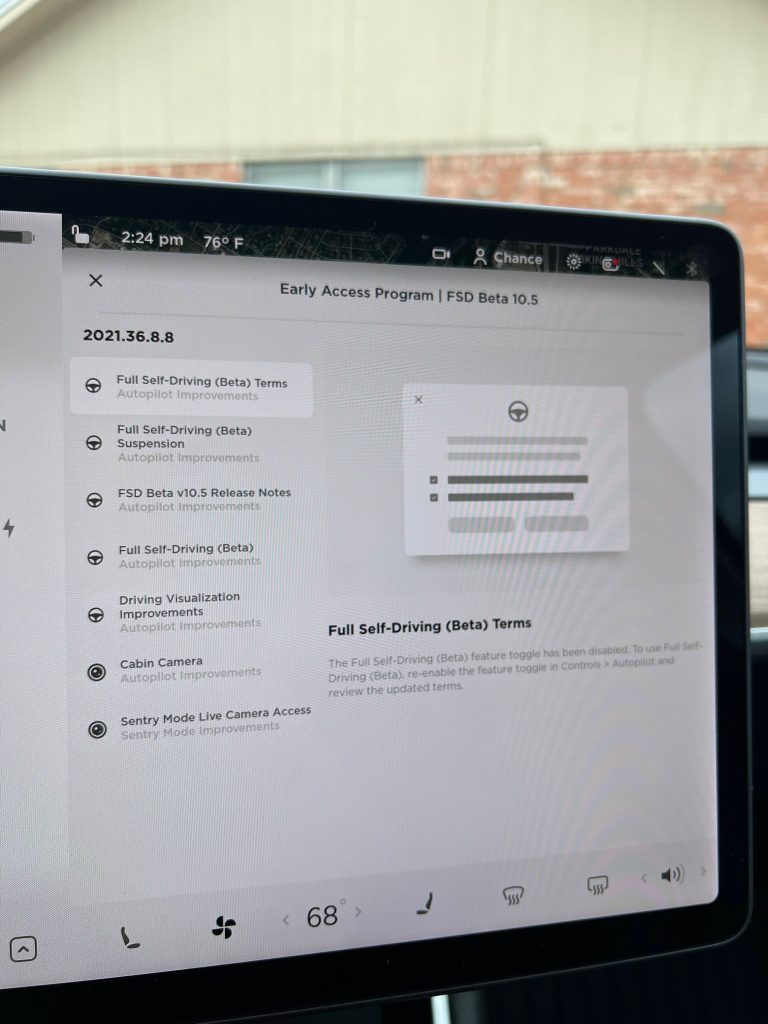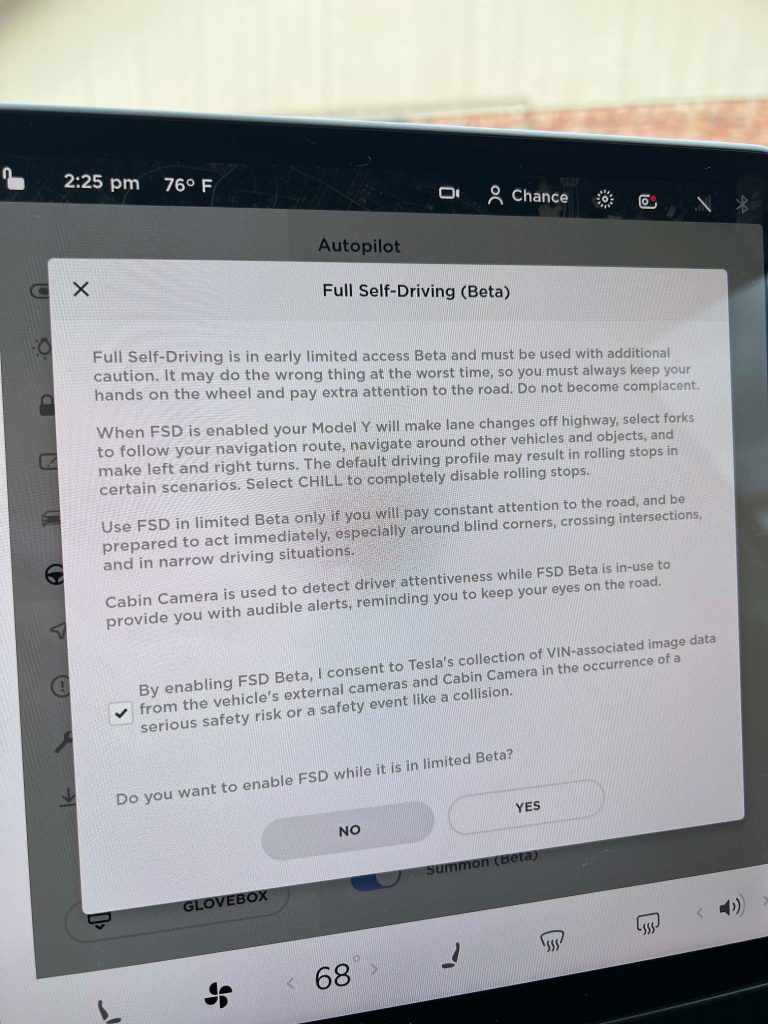
After a month of safe and cautious driving, I finally achieved a Safety Score of 99 last week, and shortly thereafter, I was granted access to the Full Self-Driving Beta for my 2021 Model Y. The experience with the FSD Beta over the last seven days has made a few things clear: it’s very much a beta, but it’s very, very impressive when it works.
Radar vs. Tesla Vision
I have a 2021 Tesla Model Y, which I took delivery of in December of 2020. Prior to that, I had a 2018 Model 3 – so I am well-versed in what it’s like driving with Autopilot, Navigate On Autopilot, and Autosteer.
My Model Y is equipped with radar hardware, unlike more recent Tesla’s coming out of the factory. Until last week, my car was still using its radar hardware for Autopilot, but that changed when I enrolled in FSD last week.
When you enroll in FSD, Tesla transitions your entire car to Tesla Vision, which is its camera-based Autopilot system. This comes with its own fair share of bugs.
Every Tesla owner has likely experienced “phantom braking,” which is when your car slams on the brakes for no apparent reason on the highway. Unfortunately, this has become even more common since my car was transitioned entirely to Tesla Vision.

Tesla Vision also has some (supposedly temporary) limitations, including that your speed when using Auto Steer is limited to 80mph and that you must use Tesla’s automatic high-beam system for your headlights. In Texas, driving 80mph on the interstate will get you passed and flipped the bird. (I have a hard time believing Elon Musk himself is driving around Austin with Auto Steer limited to 80mph.)
Additionally, Tesla’s auto high-beam system leaves a lot to be desired. Be prepared for your brights to frequently turn on and off without reason.
Ultimately, I understand why Tesla wants to transition its entire fleet to Tesla Vision and phase out radar, but I do wish there was some sort of middle ground for us owners whose cars have radar hardware. Regardless, I can only hope that Tesla Vision, like FSD itself, will continue to get better over time and these limitations can be lifted.
The good
The first thing I immediately noticed after installing the FSD Beta was the new visualization on the display. It’s incredibly impressive to see just how much data the cameras are collecting and using in real-time, including cars coming in multiple directions, lane markings, traffic controls, and more. Tesla’s on-screen visualizations have always been impressive, but this takes things to the next level.
One of my favorite touches is how the visualization changes at an intersection, switching to a bird’s eye view of what’s around you.
When the FSD Beta is confident and really nails a sequence of events, it’s incredible. Experiencing it change lanes, make turns, yield for oncoming traffic, and even handle roundabouts is a truly impressive experience. I’ve found that FSD Beta is at its best when it’s confident and a touch more aggressive than I would be.
I’ve had a few “zero-intervention” drives so far around the city, but usually they are less than 10 or 15 minutes and less than five miles. When it happens, it’s impressive, but most drives today still require at least one or two interventions.
The bad
But as impressive as the FSD Beta can be, it can be equally as terrifying. I’ve had more than a few instances where, had a police officer been around, I’m confident I would have been pulled over for something Full Self-Driving tried to do.
The best way to describe how the FSD Beta drives is “erratic.” For instance, It might randomly change lanes without reason (and sometimes without even signaling). This is especially frustrating when you need to make a right turn, and FSD Beta decides to change into the opposite lane just a quarter-mile before you’re supposed to turn. Sometimes it tries to turn from the wrong lane completely.
There are other times when FSD will randomly start signaling left or right, even though there’s no lane to change into or turn to make. Sometimes it will randomly drive over solid lines; sometimes it will stop 30 feet before a stop sign and inch forward at 1mph (especially if there is no stop line on the ground).

There’s also the whole issue of left-hand turns, particularly unprotected left-hand turns. These are truly terrifying with FSD, and it never seems fully confident in what it’s doing. This is true even if you’re using the “Aggressive” driver profile setting.
These are quirks that I expect will be pretty easy to fix over time, but there’s also the instance of edge cases. These edge cases are the things that I’m most curious to see Tesla address as time progresses. And in certain edge cases, I wonder if FSD would ever be able to “drive like a human would.”
Wrap up
There’s one thing I want to make clear: I’m not “reviewing” the Tesla FSD Beta with this post. That’s not my intention. My intention is just to offer some commentary on my first week with FSD Beta 10.5, and this “Diary” format will let me write additional installments as the beta testing process continues.

As it stands today, I see a lot of hope for FSD. There are moments where it’s simply an amazing technology that I can’t believe I have the privilege of using. There are other moments where it’s terrifying and infuriating, and for some trips, the latter is more common than the former right now. The key for Tesla will be continuous updates and improvements as the fleet collects more data and beta testers provide feedback.
I take solace in knowing that I’m probably the first (or least one of the first few) people to drive the roads of Waco, Texas, using Tesla’s Full Self-Driving system. I’m optimistic that each subsequent update will make significant improvements, and I applaud Tesla for “building in public” and being open with what improvements it’s making in each release.
It’s also a double-edged sword right now, as Tesla is transitioning to Tesla Vision across the fleet while also beta testing FSD. Both Tesla Vision and FSD have their fair share of quirks, and it’ll be interesting to watch improvements be made to both experiences in tandem.
Have you tried Tesla’s Full-Self Driving Beta? If so, what do you think of it? Have any questions for me? Let me know down in the comments!
FTC: We use income earning auto affiliate links. More.







Comments